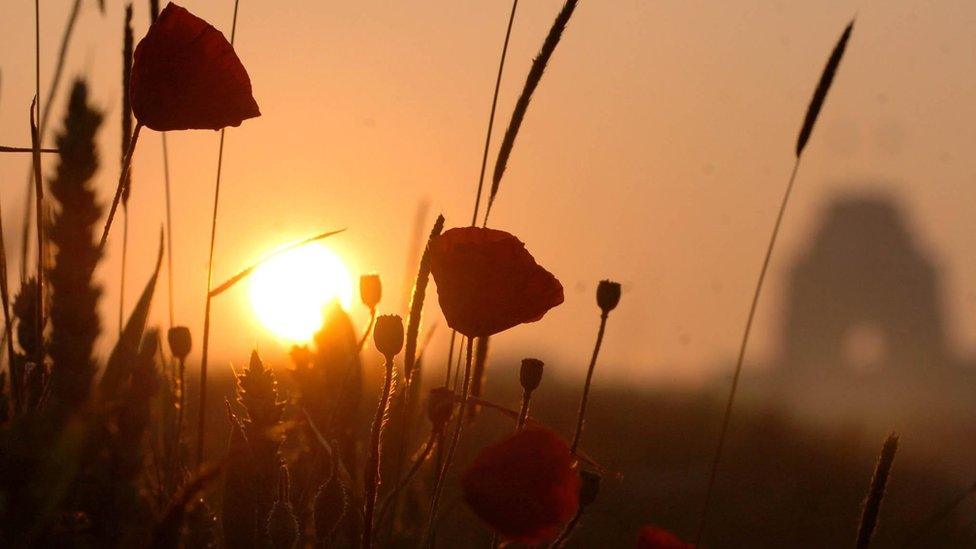Battle of the Somme: Irish casualties to be commemorated 100 years on
- Published
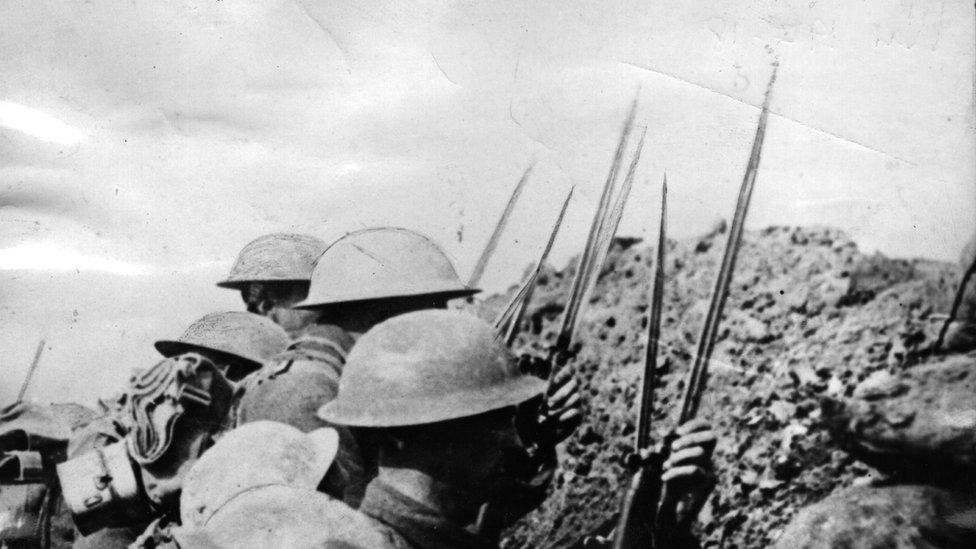
The Battle of the Somme, fought in northern France in 1916, was one of the bloodiest of World War One and claimed the lives of more than a million men on all sides
1 July this year is the centenary of the start of the Battle of the Somme.
In Northern Ireland, people have been commemorating the suffering of the 36th Ulster Division and the loss of more than 2,000 of its men in the first few days of the battle.
However, thousands of men from what is now the Republic of Ireland also fought for the British Army, in the ranks of the 16th Irish Division, which lost about 1,200 men in a single action in September during the Somme.
The British Pathe news reels from the time do not convey the mass killings of World War One.
It was death on an industrial scale.
There were 420,000 British casualties alone in the Battle of the Somme - the price paid for moving the front line just four and a half miles (7.2km).
'Witnessed atrocities'
Inside a public library in Dublin's Pearse Street are the archive files of a soldier with the Royal Dublin Fusiliers, to which we have been given access.
An injured Sgt Joseph Flanagan, with a fashionable handle-bar moustache, is seen in one photograph sitting to the right of the nurse with his cap on his lap.
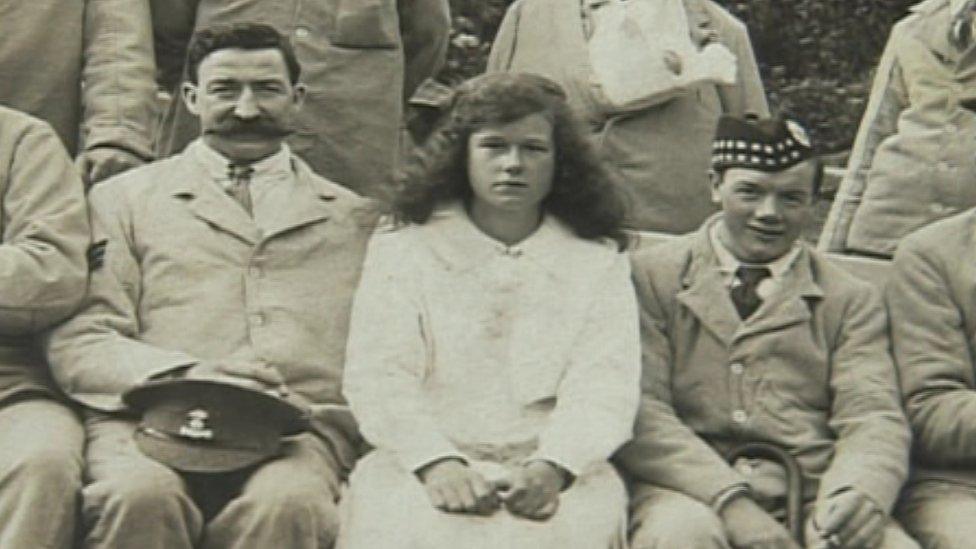
Sgt Joseph Flanagan (left) lost his arm during the Somme and is seen here photographed alongside a nurse and other wounded soldiers
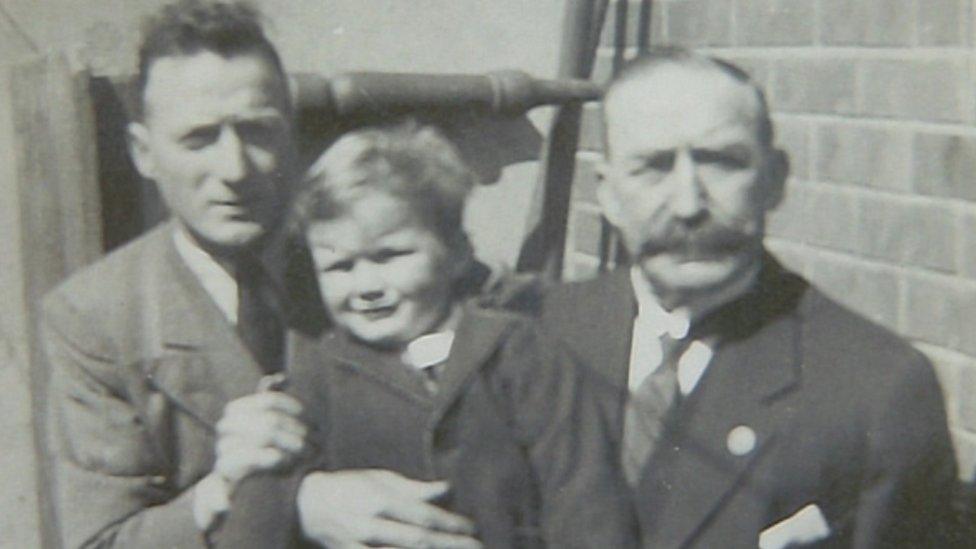
Sgt Joseph Flanagan (right) survived the war and lived to see the birth of his grandson
He survived the Somme and can be seen in another photograph with his son and grandson, Hubert.
"He was wounded in the first day of the Battle of the Somme, lost an arm and was subsequently discharged," Hubert says.
"The fact that he lost an arm may have made him very lucky, because he lived so long afterwards."
Thomas Kettle, a scholar, a Dubliner and a former Nationalist MP for East Tyrone, was not so lucky.
Kettle was in Belgium at the start of the war to raise guns for the Irish Volunteers and witnessed atrocities carried out by the Germans and that prompted him to join the British army.
Most of the soldiers in regiments from what is now the Republic of Ireland did not get involved in the fighting at the Somme until September 1916 and, like the 36th Ulster Regiment, they too suffered heavy casualties.
'Changing Ireland'
The Dubliner was among those who died at Ginchy on 9 September 1916.
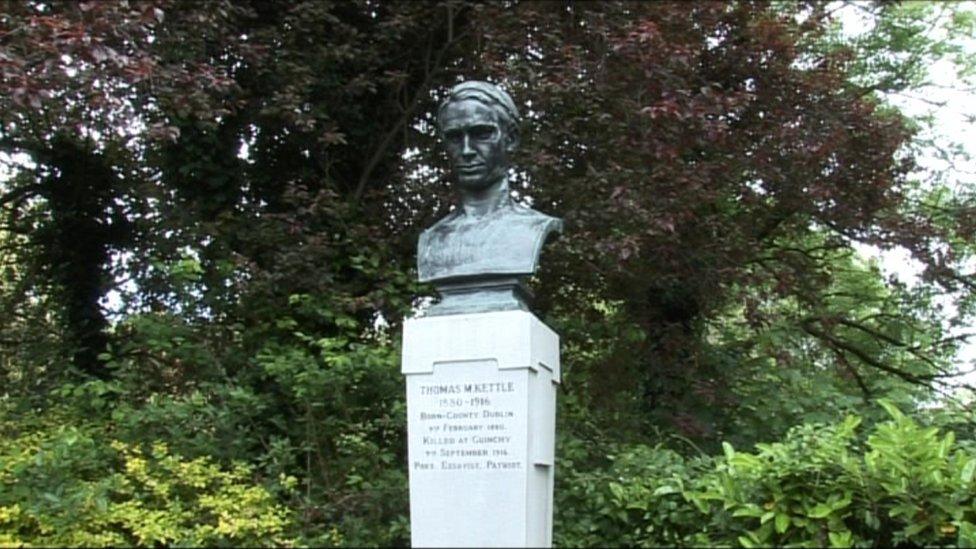
A bust of WW1 soldier, scholar and Irish Nationalist MP Thomas Kettle was erected in St Stephen's Green in the centre of Dublin
Ronan McGreevy, an Irish Times journalist and the author of a book, Wherever The Firing Line Extends, believes Thomas Kettle's life reflects how Ireland was changing at the time because of the Easter Rising.
He says that before he died, Kettle prophesised that if he was killed "he'd be remembered as a bloody British officer while those men who fought and died in the Easter 1916 Rising would be remembered as heroes".
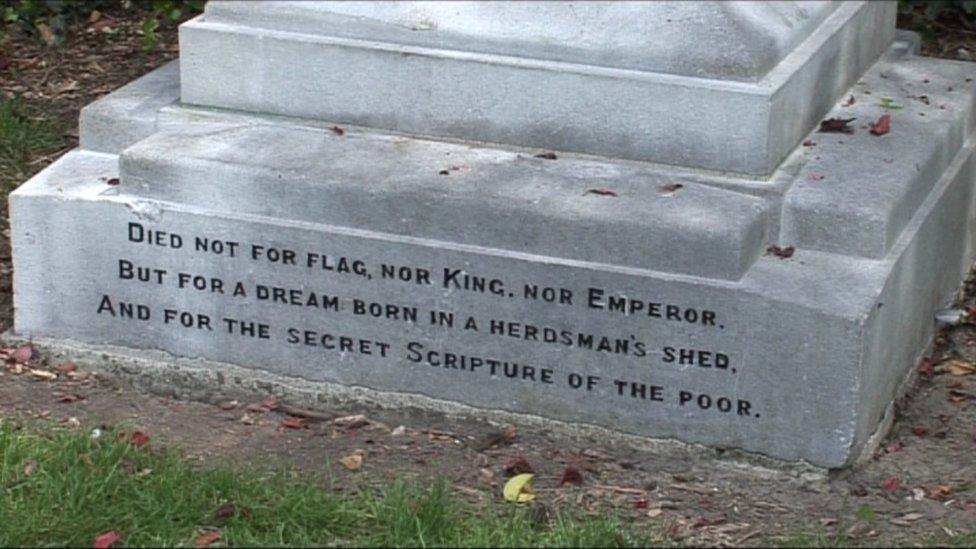
The inscription on the monument to Thomas Kettle is a testimony to the differing reasons why Irishmen went to fight in WW1
Proof of that prophecy, his family believe, is the length of time - 21 years - it took his supporters to get his bust erected in St Stephen's Green in the centre of Dublin.
Declan Kettle, the great-grand-nephew of the former MP, says of his relative: "He made a huge contribution to Ireland and Irish history, not just in politics but in education.
"He was the first Professor of Economics in the National University. He achieved so much in such a short period of time that he would also have been a huge contributor had he lived."
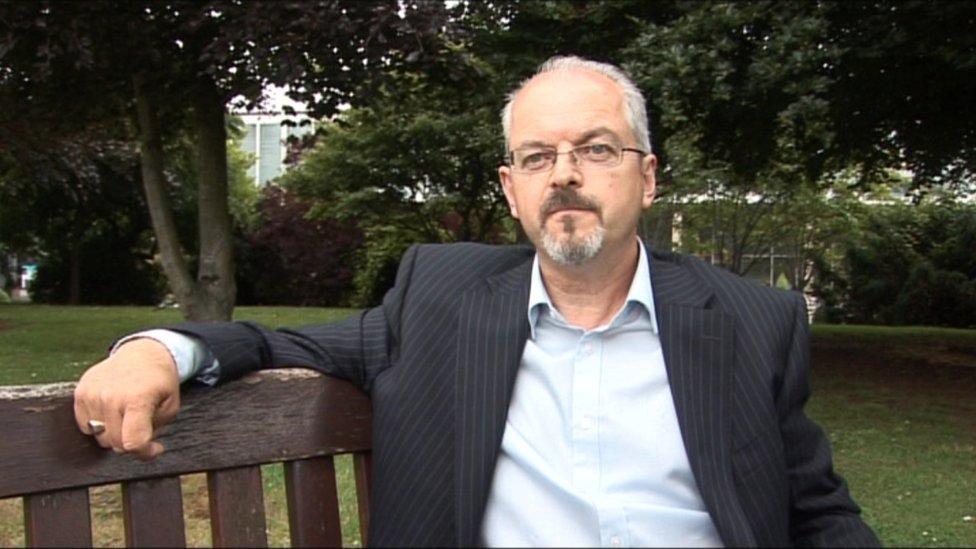
Thomas Kettle's great-grand-nephew, Declan Kettle, said his relative's death in WW1 was a great loss to Irish public life
It is a curiosity of history that a fellow officer, Emmet Dalton, held Tom Kettle as he lay dying and placed a crucifix in his palm.
It was the same Emmet Dalton, who later became an IRA leader against the British in the Irish War of Independence and who also cradled IRA leader Michael Collins and reportedly also placed a crucifix in his palm a few years later as Collins lay dying at Béal na mBláth in County Cork, shot by republican anti-treaty soldiers during the Civil War.
The Islandbridge War Memorial and Gardens along the banks of Dublin's river Liffey are dedicated to the almost 50,000 Irishmen, mainly from what is now the Republic, who died fighting in WW1, including the Somme.
'Regret'
Until relatively recently they were largely written out of Irish history, not least because they died fighting in British uniforms, even though as late as 1924 thousands of Dubliners honoured those who died in the war.
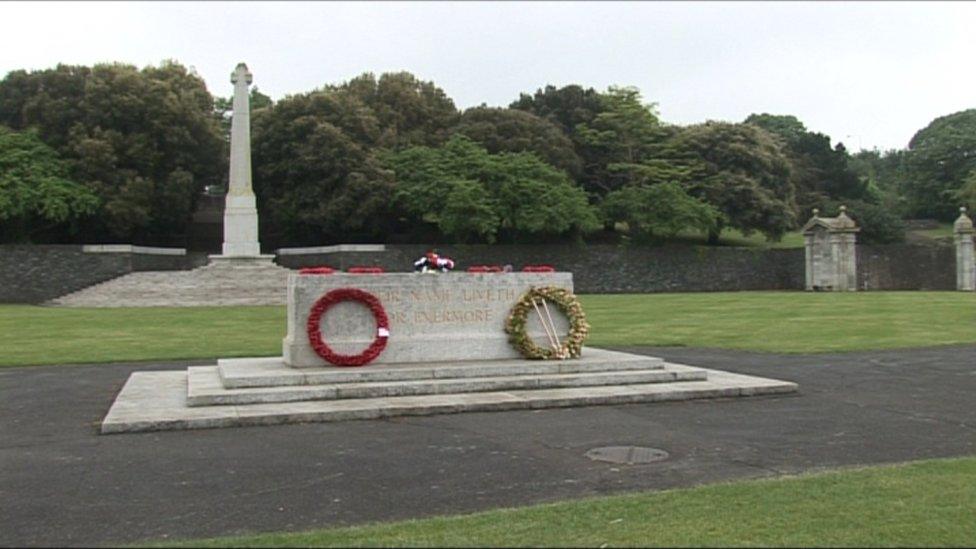
The Irish National War Memorial Gardens at Islandbridge in Dublin are dedicated to the memory of almost 50,000 Irishmen who died fighting in World War One
But that amnesia is no longer the case, according to the Irish Minister for Foreign Affairs Charlie Flanagan.
He says it is important that the Republic of Ireland as a state is now giving "full recognition and careful consideration to the many thousands of people from this island who lost their lives in pursuit of freedom in the First World War".
"I regret very much", he adds, "it hasn't been possible to do so. And we will be acknowledging during July the 36th Ulster Division and the 16th Irish Division, and it's entirely important and appropriate that we so do."
Also in the coming weeks the French President, Francois Hollande is expected to come to Islandbridge to pay his country's tribute to and to honour those Irish men who sacrificed their lives on French soil.
Shane Harrison's TV report will be broadcast as part of BBC Newsline on BBC One Northern Ireland at about 18:30 BST on Thursday, 16 June 2016.
- Published14 June 2016

- Published6 November 2015
